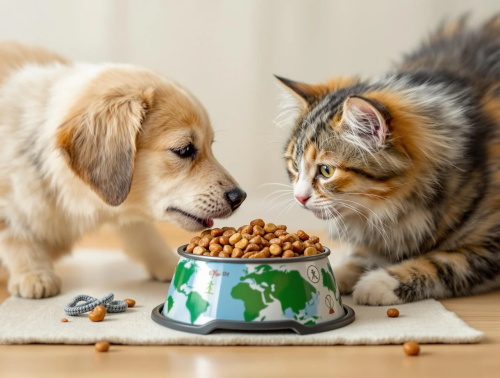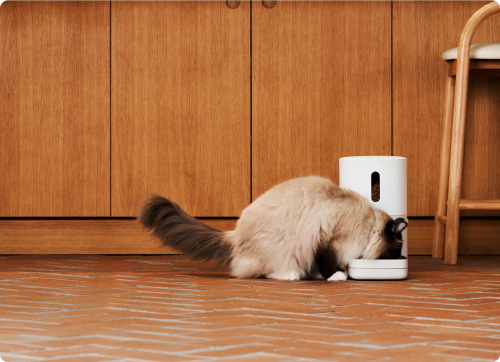Reducing Pet Food Waste: Upcycled Ingredients and Transparent Sourcing

In recent years, pet owners have become increasingly concerned about the environmental impact of their pets' diets. As awareness grows, the pet food industry is introducing innovative solutions that not only promote sustainability but also enhance the nutritional value of pet food. One increasingly popular solution is the use of upcycled ingredients and transparent sourcing.
Understanding Upcycled Ingredients
Upcycling refers to repurposing byproducts or leftover materials that would otherwise be discarded and transforming them into valuable products. In the context of pet food, this means utilizing ingredients such as fruit and vegetable scraps, spent grains from breweries, and surplus protein from the human food industry.
By incorporating these upcycled ingredients, pet food manufacturers can produce high-quality products while significantly reducing food waste. For example, some companies have developed branded ingredients derived from upcycled eggshell membranes, which offer benefits for joint health and meet consumer demand for sustainable food alternatives.
The Environmental Benefits of Upcycling
The environmental benefits of upcycling are multifaceted. By diverting food waste from landfills, upcycling can reduce methane emissions, a potent greenhouse gas. Furthermore, upcycled ingredients often require fewer resources to produce, thereby reducing their overall carbon footprint.

For example, some pet food companies report that they upcycle over one million pounds of food scraps into pet food and treats annually, significantly reducing their environmental impact and helping to conserve natural resources. Upcycling not only prevents waste but also maximizes the value of food resources that might otherwise go unused.
The Nutritional Value of Upcycled Ingredients
Contrary to misconception, upcycled ingredients can offer exceptional nutritional value. Many byproducts, such as carrot scraps or spent grains, are rich in fiber, vitamins, and minerals. When processed properly, these ingredients can enhance the nutritional value of pet food without compromising quality.
For example, some brands use upcycled brewer's spent grains to create peanut butter-flavored dog food, providing pets with a delicious and nutritious treat. By carefully selecting and processing these ingredients, manufacturers ensure pets receive high-quality nutrition while also contributing to sustainable development.
Transparent Sourcing: Building Consumer Trust
In today's market, consumers demand transparency about the sources of pet food ingredients. Openly sharing sourcing information helps build trust and demonstrates a commitment to ethical standards.
Today, some companies are focusing on sourcing the cleanest, most ethically sourced ingredients, ensuring their products meet high standards for nutrition, animal welfare, sustainability, and transparency. This approach not only strengthens brand credibility but also aligns with growing consumer expectations for accountability and ethical responsibility in the pet food industry.
The Role of Technology in Promoting Transparency
Technological advances play a crucial role in enhancing transparency in the pet food industry. For example, blockchain technology enables full traceability from farm to fork, allowing consumers to verify the origin and quality of their products.
Furthermore, smart packaging solutions are being developed to monitor pet food freshness in real time, providing consumers with up-to-date information on product quality and expiration dates. This technological integration ensures pets receive safe and nutritionally balanced food while giving owners peace of mind about their pets' well-being.
Consumer Demand for Sustainable Pet Food
Consumer preferences are shifting towards sustainability, with many pet owners seeking products that align with their environmental values. Surveys indicate that a significant portion of pet food buyers are interested in products made with ingredients that would otherwise go to waste.

Growing demand is driving pet food manufacturers to innovate and adopt more sustainable practices. As a result, the upcycled pet food market is expected to grow steadily over the next decade, driven by consumer awareness and environmentally friendly purchasing behaviors.
The Future of Pet Food
Upcycled ingredients, combined with transparent sourcing practices, represent a significant step towards a circular economy for the pet food industry. By treating food waste as a resource rather than a burden, manufacturers can produce products that are both environmentally friendly and nutritious.
As consumer demand for sustainable pet food continues to grow, more companies are expected to adopt these practices, driving the pet food industry towards a more sustainable and ethical approach. By integrating sustainability into every production step, from sourcing to packaging, the industry can significantly reduce waste while maintaining high standards for pet nutrition.
Innovation in Upcycled Pet Food
Innovation is at the heart of the growth of the upcycled pet food market. Companies are exploring creative ways to reuse ingredients while maintaining taste, texture, and nutritional quality. For example, spent grains from breweries are being incorporated into kibble and treats, while fruit and vegetable pulp is being incorporated into wet food formulas. Even seafood by-products, such as fish trimmings, are being transformed into nutritious pet supplements.
These innovations demonstrate that sustainability doesn't have to mean compromise. Pets can enjoy delicious, healthy, and environmentally friendly meals. Furthermore, many innovations offer functional benefits, such as promoting joint health, improving digestion, and boosting immune function.
Educating Consumers About Upcycled Ingredients
Consumer education is crucial for promoting upcycled pet food. Many pet owners are unfamiliar with the concept of upcycling and may initially be concerned about the quality or safety of upcycled ingredients. Clearly communicating the origin, processing, and nutritional value of these ingredients is crucial to building consumer confidence.
Brands are leveraging storytelling, social media, and product labeling to explain the origin and processing of upcycled ingredients. These educational campaigns highlight the environmental impact of upcycling and its health benefits for pets, helping pet owners make informed decisions that align with their values.
Reducing pet food waste through the use of upcycled ingredients and transparent sourcing processes is not just a trend; it's a necessity for the pet food industry. By adopting these practices, manufacturers can promote environmental sustainability, enhance the nutritional value of pet food, and earn consumer trust through transparency.
As pet owners become increasingly discerning about their pet product choices, supporting brands that prioritize sustainability and ethical sourcing can make a significant impact. Working together, we can ensure our pets enjoy high-quality, nutritious food while also protecting the planet for future generations. Through continued innovation, education, and responsible practices, the future of pet food can be both delicious and sustainable.



